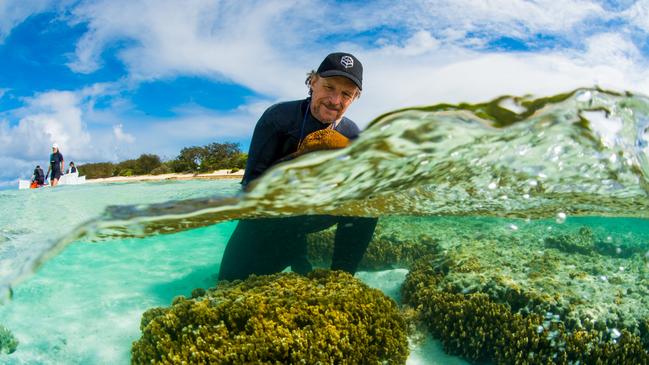Coral bleaching could hit Byron and other NSW reefs next
DIRECTOR of SCU’s Marine Ecology Research Centre Professor Peter Harrison said the current threat to the Great Barrier Reef extends to local ones.

Lismore
Don't miss out on the headlines from Lismore. Followed categories will be added to My News.
THE director of SCU's Marine Ecology Research Centre, Professor Peter Harrison, has warned that the current threat of coral bleaching in the Great Barrier Reef could also extend to reefs in Northern NSW.
The scientist said our area has significant coral communities.
"We have some important communities around Julian Rocks in Byron Bay, and particularly around Solitary Island Marine Park near Coffs Harbour, and also 150km offshore at Lord Howe Island Marine Park," he said.
"The warm water really does impact the Southern Great Barrier Reef, and if it flows south, we could also see significant bleaching occurring on our reefs.
Professor Harrison was the founding director of SCU's Marine Ecology Research Centre, and a leader in coral reproduction ecology, with more than 30 years of experience.
He said the Eastern current flows through and out of the Great Barrier Reef.
"And if it gets really hot water developing in the Great Barrier Reef matrix, some of that hot water causes increased sea temperatures to corals further south, which are not adapted to it."
Professor Harrison said the responsibility to protect Northern NSW reefs falls between communities and different levels of government.
"At the moment, the most important support (for local reefs) is to make sure that all the other stresses, like increased nutrients and sedimentation, remain at low levels.
"The best protection we can provide is to make the coral as healthy as possible.
"It's about managing our coastal environment more effectively, and that's not a local community (concern) but also a state government and federal government's responsibility."
Professor Harrison confirmed the Great Barrier Reef was expected to face a major coral bleaching event in coming months.
"What the climate models and sea surface temperature data are showing is that there is a significant increased risk of major coral bleaching occurring on the Great Barrier Reef.
"We were hoping that the monsoon up in the northern part of the Great Barrier Reef would protect more of the reef this year, but because of the vagueries of diverse weather systems, at this stage it looks like the monsoon effect is starting to decrease, and therefore we have the recipe for a major bleaching event."
Coral bleaching
Coral polyps normally live in an symbiotic relationship with algae, which are crucial for the health of the coral and the reef.
The algae provides up to 90 per cent of the coral's energy.
Coral bleaching happens when coral polyps expel algae that live inside their tissues.
Bleached corals continue to live but begin to starve after bleaching and some corals recover.
The leading cause of coral bleaching was rising water temperatures. A temperature about 1C above average can cause bleaching.


